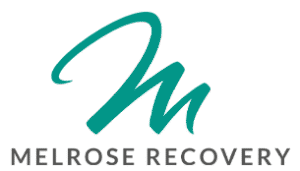
Addiction Recovery Specialists
Addiction Treatment California
Addiction Treatment California – Since 2015 Melrose Recovery, your pathway to transformation and healing. Located in the vibrant heart of Los Angeles, California just moments away from iconic Hollywood and the picturesque beaches of Santa Monica and Venice, we are dedicated to changing lives. Our comprehensive treatment approach encompasses detoxification, residential care, and aftercare services, all tailored to meet each couples or individual’s unique needs on their recovery journey.
Led by a compassionate team of addiction professionals and counselors, we offer a range of therapy programs designed to support and guide individuals toward lasting sobriety. At Melrose Recovery, we believe in the power of personalized care and diverse treatment options to pave the way for a brighter future.
Get Help Now!
Our Mission

Our Addiction Recovery Programs – Addiction Treatment California
- Mental Health
- Anxiety
- Depression
- Relapse Prevention
Our Treatment Programs
- Individual
- Group
- Family
- Psychotherapy
Prescription Drugs Commonly Abused In The United States
Opioids (Pain Relievers)
- Oxycodone (OxyContin, Percocet)
- Hydrocodone (Vicodin, Norco)
- Morphine
- Codeine
- Fentanyl (also illicitly manufactured)
- Methadone
- Oxymorphone (Opana)
Stimulants (ADHD Medications)
- Amphetamine/Dextroamphetamine (Adderall)
- Methylphenidate (Ritalin, Concerta)
- Dexmethylphenidate (Focalin)
- Lisdexamfetamine (Vyvanse)
Stimulants
- Cocaine
- Crack cocaine
- Methamphetamine (crystal meth)
- MDMA (Ecstasy, Molly)
Cannabinoids
- Marijuana (still federally illegal, though legalized in many states)
- Synthetic cannabinoids (K2, Spice)
Inhalants
- Paint thinners
- Gasoline
- Glue
- Aerosol sprays (Galaxy Gas, Freon, Computer Dusters, Whipped Cream Cans)
Central Nervous System Depressants
Benzodiazepines:
- Alprazolam (Xanax)
- Diazepam (Valium)
- Lorazepam (Ativan)
- Clonazepam (Klonopin)
Sleep Medications:
- Zolpidem (Ambien)
- Eszopiclone (Lunesta)
Barbiturates:
- Phenobarbital
- Secobarbital
- Amobarbital
Opioids
- Heroin
- Illicitly manufactured Fentanyl and analogs
- U-47700 (“Pink”)
Hallucinogens
- LSD (Acid)
- Psilocybin (Magic Mushrooms)
- PCP (Phencyclidine)
- Ketamine
- DMT
- Salvia divinorum
Dissociatives
- Nitrous oxide (laughing gas)
- DXM (dextromethorphan in high doses)
Others
- Anabolic steroids (illegally used for performance enhancement)
- Bath salts (synthetic cathinones)
- Kratom (legal in some states, but controversial)
Hardest-Hit Areas in California by Substance Abuse
A precise ranked list of the “25 hardest-hit areas in California by substance abuse” isn’t publicly available because data varies by source, substance type (opioids, methamphetamine, fentanyl, alcohol, etc.), and reporting method (overdose deaths, hospitalizations, arrests, etc.). However, several counties and cities consistently emerge in public health reports, law enforcement data, and overdose mortality statistics as being significantly impacted by substance abuse.
Counties with High Substance Abuse Impact
Los Angeles County
High rates of fentanyl deaths, methamphetamine use, and homelessness linked to substance abuse.
San Francisco County
One of the highest rates of drug overdose deaths, driven by fentanyl and meth.
San Diego County
Rising fentanyl deaths and methamphetamine abuse.
Kern County
Among the highest opioid prescription and overdose rates in the state.
Humboldt County
Historically high opioid death rates, rural access challenges.
Shasta County
High overdose mortality rates, opioid and meth issues.
San Bernardino County
Major methamphetamine trafficking and fentanyl deaths.
Fresno County
Significant issues with methamphetamine and fentanyl.
Sacramento County
Rising fentanyl overdoses and meth use.
Stanislaus County
High opioid and meth-related deaths.
Tulare County
High overdose rates; meth and opioids prevalent.
Santa Clara County
Increase in fentanyl-related deaths.
Mendocino County
Rural overdose and opioid prescription challenges.
Sonoma County
Elevated overdose death rates tied to opioids.
Monterey County
Growing methamphetamine and opioid problems.
Placer County
Increase in fentanyl overdose deaths.
Riverside County
Major corridor for drug trafficking; fentanyl and meth deaths rising.
Orange County
High numbers of overdose deaths, particularly linked to opioids.
Ventura County
Notable fentanyl overdose increases.
Butte County
High rates of overdose and substance-related hospitalizations.
Cities or Metro Areas Noted for Substance Abuse Challenges
Oakland (Alameda County)
Significant opioid, fentanyl, and meth issues.
Bakersfield (Kern County)
High opioid-related mortality.
Stockton (San Joaquin County)
High rates of meth and opioid abuse.
Santa Ana (Orange County)
Significant drug-related crime and overdoses.
Eureka (Humboldt County)
Severe rural substance abuse challenges, especially opioids.
Addiction Recovery in The United States
What is addiction recovery?
Addiction recovery is the process of overcoming substance use disorder and rebuilding a healthy, meaningful life without the use of drugs or alcohol.
How long does addiction recovery take?
Recovery is a lifelong process, but structured treatment programs typically last from 30 days to a year or more, depending on individual needs.
What types of treatment are available for addiction?
Common treatment options include inpatient rehab, outpatient programs, detox services, medication-assisted treatment (MAT), therapy, and support groups.
What is detox, and why is it important?
Detox is the process of clearing substances from the body, often the first step in recovery. It helps manage withdrawal symptoms and prepare for further treatment.
What is the difference between inpatient and outpatient treatment? – Addiction Treatment California
Inpatient treatment involves living at a facility 24/7, while outpatient treatment allows individuals to live at home and attend scheduled sessions.
What role does therapy play in addiction recovery? – Addiction Treatment California
Therapy helps individuals understand the root causes of addiction, develop coping skills, and rebuild emotional health.
What is Medication-Assisted Treatment (MAT)? – Addiction Treatment California
MAT uses FDA-approved medications like methadone, buprenorphine, or naltrexone to treat opioid and alcohol addiction, combined with counseling and therapy.
What are 12-step programs? – Addiction Treatment California
12-step programs, such as Alcoholics Anonymous (AA) and Narcotics Anonymous (NA), provide peer support through a structured recovery process.
Are there alternatives to 12-step programs? – Addiction Treatment California
Yes, alternatives include SMART Recovery, LifeRing, Women for Sobriety, and secular recovery groups that focus on science-based methods.
Is addiction recovery covered by insurance? – Addiction Treatment California
Many insurance plans, including Medicaid and private insurance, cover addiction treatment under the Mental Health Parity and Addiction Equity Act.
Can addiction be cured? – Addiction Treatment California
Addiction is considered a chronic condition. While it may not be “cured” in the traditional sense, it can be successfully managed with ongoing recovery efforts.
What is relapse and is it common? – Addiction Treatment California
Relapse is a return to substance use after a period of sobriety. It is common and often considered a part of the recovery journey, not a failure.
How can someone prevent relapse? – Addiction Treatment California
Relapse prevention strategies include therapy, support groups, lifestyle changes, avoiding triggers, and having a relapse prevention plan.
What are sober living homes? – Addiction Treatment California
Sober living homes are group residences for people recovering from addiction, offering a structured, substance-free environment.
What is dual diagnosis treatment? – Addiction Treatment California
Dual diagnosis treatment addresses both addiction and co-occurring mental health disorders, such as depression, anxiety, or PTSD.
How does addiction recovery differ for adolescents? – Addiction Treatment California
Adolescent recovery programs focus on developmental needs, education, family involvement, and peer influence.
Are there gender-specific recovery programs? – Addiction Treatment California
Yes, some programs cater specifically to men or women to address gender-specific issues and create a more comfortable recovery setting.
What role does family play in addiction recovery? – Addiction Treatment California
Family involvement can greatly improve outcomes by offering support, participating in therapy, and helping to create a stable environment.
What is the role of peer support in recovery? – Addiction Treatment California
Peer support from others who’ve experienced addiction fosters encouragement, accountability, and shared understanding throughout recovery.
Are faith-based recovery programs effective? – Addiction Treatment California
For some individuals, faith-based programs like Celebrate Recovery provide spiritual support that enhances motivation and healing.
What are the first steps to seeking help for addiction? – Addiction Treatment California
The first steps include recognizing the problem, reaching out for help, and contacting a treatment provider or helpline.
How do I find a reputable addiction treatment center? – Addiction Treatment California
You can find accredited treatment centers through SAMHSA’s treatment locator, your doctor, or referrals from trusted sources.
What happens after rehab? – Addiction Treatment California
Aftercare typically includes outpatient therapy, sober living, ongoing peer support, and relapse prevention planning.
Can people recover from addiction without rehab? – Addiction Treatment California
Yes, some people recover through support groups, therapy, or personal efforts, but professional help often improves success rates.
What is the success rate of addiction recovery? – Addiction Treatment California
Success rates vary widely depending on the substance, treatment type, and support system, but ongoing engagement increases the chance of long-term sobriety.
Insurance Coverage Made Easy at Melrose Recovery
Health Insurance PPO Plans for Addiction Treatment – Addiction Treatment Arizona
PPO Plans for Melrose Recovery
Finding effective treatment for drug and alcohol addiction is one of the most important steps in the recovery journey. For many individuals and families, navigating how to pay for rehab can be a major concern. Fortunately, Melrose Recovery, a leading addiction treatment center, accepts a wide range of PPO (Preferred Provider Organization) health insurance plans, making high-quality care more accessible and affordable.
Why Choose Melrose Recovery?
Melrose Recovery offers a structured and supportive environment for individuals seeking recovery from substance abuse disorders. Their programs include:
-
Medical Detox
-
Residential Inpatient Treatment
-
Dual Diagnosis Treatment
-
Individual and Group Therapy
-
Aftercare Planning
What sets Melrose apart is their client-centered approach, experienced clinical team, and commitment to long-term recovery. Located in Los Angeles, the facility provides a safe and comfortable setting to begin healing.
What Are PPO Insurance Plans?
PPO insurance plans allow policyholders to see healthcare providers both inside and outside of their insurance network, usually without a referral. When it comes to addiction treatment, this flexibility can be vital.
Key PPO benefits for rehab coverage:
-
Out-of-network options: You can still receive coverage for facilities not directly in your provider’s network.
-
No referral needed: You don’t need a referral from a primary care physician to start treatment.
-
More provider choices: PPO plans give you more freedom to choose the rehab facility that fits your needs.
Does Melrose Recovery Accept My PPO Insurance?
Melrose Recovery works with most major PPO insurance providers, including but not limited to:
- Aetna
- AmeriHealth
- Anthem
- Blue Cross Blue Shield
- Cigna
- Hawaii Medical Service Association (HMSA)
- Humana
- Kaiser Permanente
- Medical Mutual
- Premera Blue Cross
- UnitedHealthcare
Melrose Recovery’s admissions team is available 24 hours a day 714-442-7782 to verify your insurance benefits quickly and confidentially. This process helps determine your coverage, deductible, co-pays, and out-of-pocket maximums before starting treatment.
Verifying Insurance Coverage
To find out if your PPO insurance plan covers treatment at Melrose Recovery:
-
Call Melrose Recovery directly – Speak with an admissions specialist who can walk you through the insurance verification process.
-
Submit insurance info online – Many treatment centers, including Melrose, offer a secure online form for quick verification.
-
Check with your insurer – You can also contact your insurance company directly and ask about your behavioral health benefits.
The Importance of Getting Help
Addiction is a chronic and progressive condition—but with the right support, recovery is absolutely possible. By accepting a variety of PPO plans, Melrose Recovery helps reduce financial barriers to care, so individuals and families can focus on healing rather than costs.
Get Started on Your Personal Journey to Addiction Recovery
Before you can get to aftercare, you have to take the first step. Overcoming addiction is a genuine choice when you decide to quit and enlist the help of therapist. Contact the addiction treatment specialist at Melrose Recovery to start the rehab admission paperwork and process.
Licenses and Accreditations




